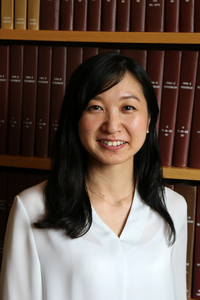
N-methyl-D-aspartate receptors (NMDARs) belong to a class of ionotropic glutamate receptors that are crucially involved in brain development and function, and NMDAR dysfunction is implicated in various neurological diseases. The transmembrane ion channel opens upon membrane depolarization and agonist binding to the extracellular ligand-binding domain, while the extracellular amino terminal domain (ATD) tightly regulates functional properties. Although NMDAR structures representing inhibited states are available, there is no clear understanding of how conformational alteration in the extracellular domains regulate NMDAR activity. In my talk, I will describe the first structural evidence for conformational alteration of the NMDARs and how the NMDARs are activated and inhibited.
To understand the regulation mechanisms above, I conducted structural and functional studies. First I present the first structural evidence for conformational alteration in the NMDAR ATD wherein the bilobed structure of the ATD opens and closes. On the basis of structure-based mutagenesis coupled to electrophysiology, I show that stabilization of open and closed cleft conformations leads to activation and allosteric inhibition, respectively. In order to understand the conformational change in the context of full length, we obtained the intact NMDAR structure in an active conformation by cryo-electron microscopy in the absence of inhibitors. These studies allow us to uncover the conformational change in multiple domains and molecular mechanisms. After highlighting my work on NMDARs, I will conclude with my plans to elucidate the regulation mechanisms of another ionotropic glutamate receptor Kainate receptor by auxiliary subunits using Cryo-electron microscopy, X-ray crystallography and electrophysiology.